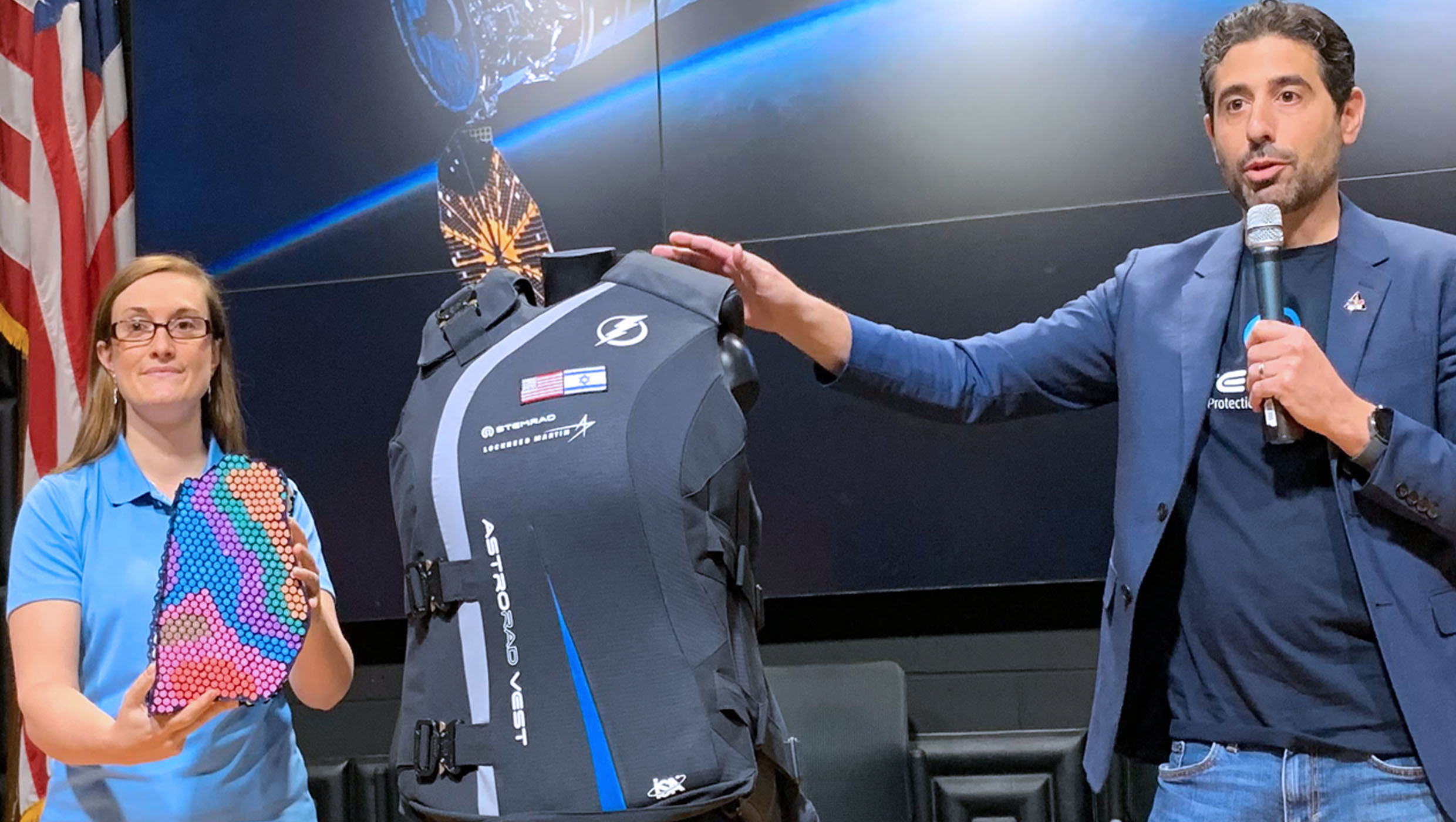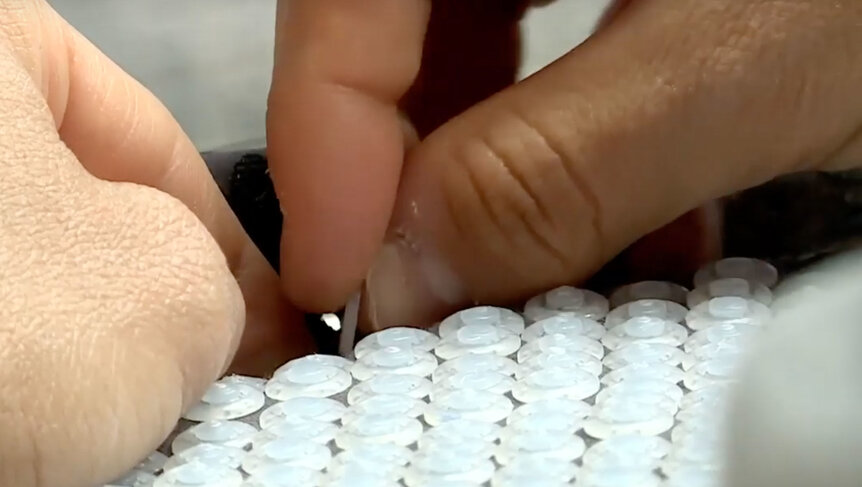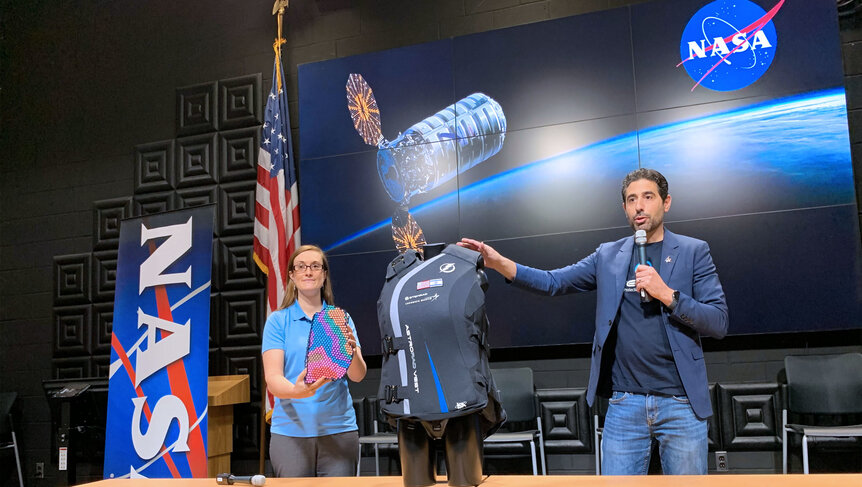Create a free profile to get unlimited access to exclusive videos, sweepstakes, and more!
This next-level superhero space vest could make humans immune to killer radiation

Pay close attention to any superheroes who live in or come from space (hello, Superman), and you’ll notice that what they’re wearing is usually sleek, form-fitting, and definitely involves spandex. So how are they not getting constantly radiation-bombed?
Killer radiation is one of the greatest concerns about venturing beyond Earth’s protective atmosphere. If billions of years’ worth of solar storms could turn Mars into a frozen wasteland, they could easily take down human astronauts. This is why the Astrorad vest — recently launched by NASA on Northrop Grumman's 12th commercial resupply mission (which SYFY WIRE saw live) — now exists. It not only shields the most vulnerable areas on astronauts’ bodies, but moves with them almost as if they were wearing nothing but spandex.
Astrorad is a collaboration between Israeli-American startup Stemrad, the Israeli Space Agency, NASA, and Lockheed Martin. The brainchild of Stemrad founder and CEO Dr. Oren Milstein, Astrorad is literally going to go far if you think about the 33.9 million miles it takes to get to Mars (and it’s not like the Moon is a day trip, either). Stemrad started out making equipment for first responses in nuclear incidents. It has now taken that technology to space, in the form of a vest that selectively shields the organs most prone to acute radiation sickness or potentially fatal cancer, while allowing fluid motion for the astronaut.
“Astrorad is very unique in the sense that it employs the principle of selective shielding, and in doing so, it’s providing augmented protection to those most sensitive organs and bone marrow,” Milstein explained in a pre-launch press briefing.
The futuristic polyethylene mesh that Astrorad is made of is designed to keep harmful radiation particles from invading any part of the body. It is thicker around the lungs and gastrointestinal tract, as well as the breasts and ovaries for female astronauts.
Besides proving how well it can block particles from solar and cosmic rays, Astrorad, which has never been in microgravity before, will soon be put through a range of motion tests that involve everything astronauts would normally do on the space station, such as exercise, housekeeping, and shuffling cargo around.
“Our key challenge to overcome is aerodynamics, of course,” Milstein said. “To protect, you need efficient use of mass but to also make it flexible.”
Somehow, Astrorad looks strangely comfortable ... if you can get past the nearly 50 pounds it weighs. That shouldn't be an issue in microgravity.
The real test for Astrorad will be when it takes off aboard an Orion spacecraft on Artemis 1 in 2020, making its way to the Moon several years before the next humans are supposed to touch down on the lunar surface. What happens then is going to give the Stemrad team insight into the radiation environment they will be facing up there. Polyethylene creates hardly any secondary radiation rays when it gets bombarded with solar particles.
Astrorad is supposed to be just as effective as an onboard storm shelter — just one that you can carry with you. Astronauts won’t be expected to wear the vest unless there is a radiation event going on, and there will be detectors in Orion that will pick up on when a solar storm is raging.
“We’re going to be able to take the amazing data that we get from this ergonomic experiment ... then pair it with our Artemis 1 data in late 2020 and get actual information on performance in the radiation environment,” Milstein said. “Combine those two, and we’ll be able to improve the performance and design for the deep-space radiation environment.”
As for how multiple superheroes continue to stay alive, maybe immunity to cosmic radiation is just in their super-DNA.




























